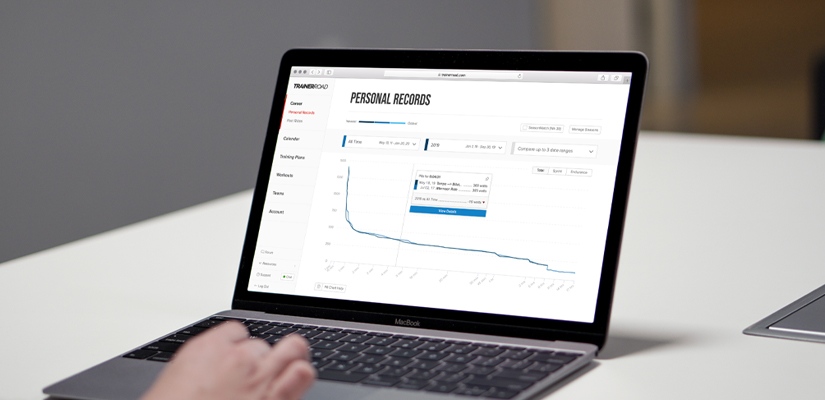Why You Should Measure Your Power PRs

Every athlete wants effective training. But how do you know if it works? Tracking power Personal Records with Performance Analytics will reveal your strengths and prove your hard work is paying off.
For more on Performance Analytics check out our Ride Analysis YouTube Playlist.
Why Use Power for PRs?
Keeping track of your power PRs will make you a faster cyclist. But why not use heart rate or time? The prime reason is that watts are watts. They are an objective measure of your performance. Unlike heart rate, which can be influenced by hydration, caffeine, stress, and other factors, power is constant in its ability to provide accurate data. Power instantaneously tells you how hard you are working. Heart rate data lags behind the work you are doing. This is especially evident when doing short, explosive efforts. Heart rate data is valuable. But power is more consistent.
Ultimately, we want to ride the course in as little time as possible. But numerous variables influence tracking PRs by time. Course conditions, wind, drafting, and equipment setup all affect your time. For most of us, the only time we can ride the course is on race day. Tracking time is helpful for many reasons, but it’s not consistent enough to accurately gauge your fitness. Instead, power gives you data that applies to race day.
What Do Power PRs Tell Me?
All athletes want training that works. But how can you tell that it’s working? FTP is an excellent growth metric, but PRs provide a comprehensive and detailed picture. In addition to FTP, Power PR’s confirm exactly how your fitness is growing within specific time durations. With Performance Analytics, you can visualize your growth through one season, or compare over multiple timeframes.
In addition to confirming your progress, PRs precisely show you where your fitness is growing. Learning more about yourself as a cyclist and applying that information on race day will make you faster. PRs help you find your strengths. For example, after analyzing your PRs, you find out that you are great at 1-minute efforts. So during the race, you may want to consider launching your attack to the finish line a little earlier instead of waiting until the last 200 meters. Similarly, you can use this information to select events and courses that favor your abilities.
Tracking power PRs shows where you are growing, but just as important, they help you find your limiters. Let’s take a sprinter as an example. Let’s suppose that they have excellent sprint power from 1-15 seconds, but a massive drop-off in power after 10 minutes. This is going to be a problem in any event lasting more than 10 minutes. By addressing this limiter with specific training early in the season, they can make sure they are in the winning move at the end of the race. Tracking your PRs can help you race your strengths and train your limiters.
Alongside visualizing your strengths and limiters, seeing your hard work pay off is incredibly motivating. With every power PR you set, indoor or out, you will earn a trophy on the ride analysis page. As you grow in fitness, you’ll have fun seeing those trophies.
How is TrainerRoad’s PR Chart Different?
We designed a personal records chart to provide applicable data that makes you faster. The problem with most PR charts is that they don’t measure apples to apples. Fitness is cyclical. You will be more fit at the end of a season than when it began. Additionally, calendar years don’t align with cycling seasons. For example, ‘Cross season starts in August and ends in January, while road season runs from February to September.
A more valuable way to measure would be to compare PRs over any timeframe you wish instead of just calendar years. With Performance Analytics, you can create custom seasons for a time period that you are focusing on a specific discipline, a particular training phase, or even for a time period of illness or time off the bike.
Taking things even further, you can use SeasonMatch for the most precise PR measurement possible. SeasonMatch allows you to compare a specific point of progress across multiple training seasons. For example, if you are only four weeks into your Base Phase and you want to see how your fitness has changed since that same point in another training phase, SeasonMatch makes it easy. Simply check the “SeasonMatch” box on the PR chart and see your improvement unfold.
Another way we improved the PR chart is by breaking your PRs into smaller time scales. Most PR charts only display sprint power and endurance power on one graph. This makes it challenging to visualize your improvements. We designed the PR chart so that you can drill down into sprint (1-30 seconds), and endurance power (31+seconds) separately. By drilling down into the details, you get the maximum benefit from data analysis.
By tracking your power PRs, you can prove your training is working, discover more about yourself as a cyclist so you can race your strengths and train your limiters. For more information, check out our YouTube video How to Analyze Personal Records.